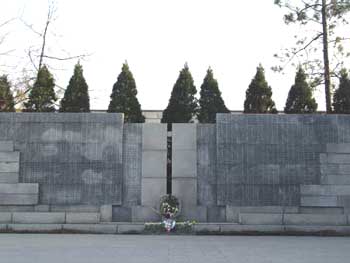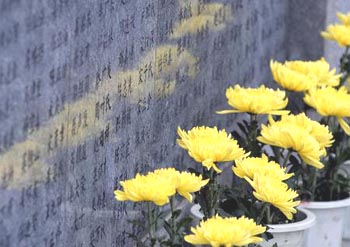Nanjing plans to add the names of 90,000 captive soldiers that were killed by invading Japanese soldiers in 1937 to a memorial wall at a newly opened museum.
The wall has already been nicknamed the "wailing wall" by residents in Nanjing, capital of Jiangsu Province. It was built beside a pit at the Nanjing Massacre Museum where thousands of Chinese are buried, all of whom were among the 300,000 people murdered in the Nanjing Massacre, also known as the Rape of Nanking to Westerners, in December 1937, Beijing News reported today.
The museum is contacting historians in Taiwan Province in hopes that they can provide more information about the military system of the Kuomintang, the ruling party at the time. It also hopes the historians can provide the names of the murdered captives, the report said.
"Killing prisoners is against international law and we hope we can inscribe those soldiers' names onto the wall to commemorate their deaths," Zhu Chengshan, curator of the museum told the newspaper.
More than 12,000 civilian names have already been added to the wall to remind the world of the most painful atrocity in China's history, the report said.
"There were only 3,000 names inscribed to represent the 300,000 killed compatriots when we built the wall," Zhu said. "The list later developed to more than 12,000 names and now we have another 2,000 more names waiting to be added."
The museum will extend the wall to reach the nearby pit so that it can add more names, Zhu said.
The six-week wave of killing by Japanese soldiers after the fall of Nanjing, then the Chinese capital, was among the bloodiest episodes of Japan's invasion of China between 1937 and 1945.
On July 7, 1937, invading Japanese forces assaulted Lugou Bridge in Beijing and Chinese soldiers responded with gun fire. This became known as the Lugou Bridge Incident, or the "July 7 Incident". It marked the formal beginning of the War of Resistance against the Japanese Invasion.
More than 300,000 Chinese are believed to have been murdered and thousands raped in the Nanjing Massacre.
(Shanghai Daily December 14, 2007)




